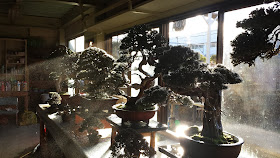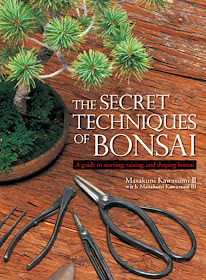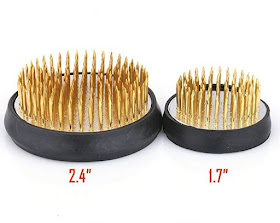Trees and plants have something in common, the location of your indoors and outdoors is crucial for it's survival and health in general. Both love bright spots but having said that it's just scratching on the tip of the iceberg. We can ask ourselves, why do certain trees reach centuries of lifespan and look healthy and thriving whereas others don't? Although the success of growing a Bonsai is not all about location, it's certainly an important aspect. An additional factor plays the species of your Bonsai, especially if it originates from a subtropical climate or otherwise. A tree in India might thrive better than equally in Europe or America and vice versa.
Different strokes for different folks, this rule of thumb applies not only to humans but also to plants and trees in general. Deciding on what is the best location to place your Bonsai tree can be hard, as several factors (local climate, time of year, tree species, etc.) should be taken into consideration. The best is to know what species of tree you have and to look for specific information about it.
Most outdoor trees are best placed on a bright spot, about half the day in direct sunlight, and protected from the wind. Indoor trees are best placed in a bright position as well; usually right in front of a window facing the South. Place indoor trees somewhere with a constant temperature. (See picture above) A typical indoor Bonsai can be a Ficus, Carmona or Chinese Elm whereas a typical outdoor Bonsai is a Juniper, Pine or Maple.
Most outdoor trees are best placed on a bright spot, about half the day in direct sunlight, and protected from the wind. Indoor trees are best placed in a bright position as well; usually right in front of a window facing the South. Place indoor trees somewhere with a constant temperature. (See picture above) A typical indoor Bonsai can be a Ficus, Carmona or Chinese Elm whereas a typical outdoor Bonsai is a Juniper, Pine or Maple.
Suitable amounts of light is critical for the survival and health of a plant. Low levels of light make a plant weak and susceptible to all kinds of pests and disease. Giving your plant the right 'strength' and 'colour' of light could make the difference between a vibrant or struggling bonsai... The first thing we have to do is identify the quantity of light that you’re looking at in the area that you’re going to put your bonsai. You use a little light meter for that. The light meter generally has a lux which tells you the density or intensity of light. On a good bright day, you could have around 100,000 lux outside in the bright parts of the world. In the tropical parts, maybe 6000K and on a cloudy day, it can go down to 4000 lux. On dark days, it can get even less. Indoors, the light levels vary quite significantly. The human eye can read at 198 lux, but even the plants that live in the undergrowth in the Amazon forest require at least 400 lux to survive.
Ficus’ and other indoor plants can generally manage at that kind of light level. Bonsais, on the other hand, generally need a lot more light. 3500 – 4000 lux is a good reading to have. You need to then choose appropriate lighting for the area that you’re going to have. Sometimes you can have light that creates heat. HID – High Intensity Discharge lighting. Then there is metal halide lighting (MH) and there’s also HPS or High Pressure lighting. They use a lot of electricity for one but they also generate a lot of heat, and the other thing about this kind of light is that it’s a general spectrum, so it goes across the entire spectrum of light.
Most of the light, or 20% of the light is used by the plant. Using fluorescent light, which is the other type of light is more accurate and fluorescent lights are colour corrected. You can get very precise lighting for the plant depending on what your plant is doing, whether you want it to grow leaves and be used between 500K and 6000K. It is a blue light and then you have for flowering, you would use 2000 to 2700K which is on the red spectrum. There is a new mention in the plant light area, made from LEDS - light emitting diodes. They generally come in panels or in strips. They can be used right over the plant and sometimes, if it’s a long strip, can even put it within the plant to light up the area. It’s not advisable to run the light 24 hours a day because trees need to rest. Trees need to be dormant in the night. When you can feel the heat and light outside, that’s the best time to have your additional lighting or support lighting for the trees.
The Four Basic Things to Keep in Mind
- How to position your Bonsai
- Watering your Bonsai
- Pruning and Shaping your Bonsai
- Re-potting your Bonsai
Over watering or under-watering your Bonsai is the no. 1 Killer
 These factors play a crucial role in keeping your Bonsai healthy and stimulate growth. The positioning is crucial, as your bonsai should be kept away from direct heat or draft. The lighting is ideally in an area with plenty of sunlight. In addition, Bonsai's need humidity in order to keep their soil moist. Please always remember that the path to Bonsai longevity depends on your PATIENCE and dedication.
These factors play a crucial role in keeping your Bonsai healthy and stimulate growth. The positioning is crucial, as your bonsai should be kept away from direct heat or draft. The lighting is ideally in an area with plenty of sunlight. In addition, Bonsai's need humidity in order to keep their soil moist. Please always remember that the path to Bonsai longevity depends on your PATIENCE and dedication. The number one cause of most bonsai tree deaths is under-watering. Because the soil layer is so shallow, it is prone to drying out very quickly. Bonsai trees should be watered right when the top layer of soil appears dry. Depending on the type and size of your tree, as well as the type of soil you use, the frequency of watering can differ and can even be once a day. Therefore, it’s best to water each of your bonsai plants individually, instead of sticking to a routine.
When watering your bonsai tree, the main goal is to fully saturate the root system with water. To ensure proper saturation, keep watering until water escapes through the draining holes. To allow for proper draining, many bonsai trees come with a tray to collect excess water.
Over watering can also be detrimental for your bonsai tree. Symptoms of an over watered bonsai include: yellowing of leaves and the shriveling of smaller branches. If a bonsai is over watered, its roots are drowning in water and are deprived of oxygen which prevents further growth to support the tree. Over watering can also result from poor-draining soil. Although sporadic watering may seem an easy task, well it is not. An automated water drop irrigation system helps to water your bonsai sporadically.
To ensure that you are watering your bonsai properly, you’ll need to assess your bonsai tree daily. The rule of thumb is to water as soon as the soil appears dry.
There are two main types of pruning: maintenance pruning and structural pruning.
Maintenance pruning strengthens the tree by encouraging new growth. By cutting away young shoots and leaves it exposes the leaves underneath to air and sunlight which further strengthens the tree and benefits its overall health.
Areas that require maintenance pruning include the branches, buds, and leaves. Pruning away branches encourages the growth of smaller branches and allows you to control the shape of your tree. Pruning buds away from branches produces a more compact leaf growth which encourages the growth of smaller leaves.
Typically, you should prune your bonsai tree when you see new growth that’s starting to morph the shape of your tree in an undesirable manner. For flowering bonsai's, pruning should take place during the spring to encourage more flowers to grow the following year.
Structural pruning is a more advanced technique that should only be done when the tree is dormant. It involves the removal of the tree’s primary structural branches and requires the skills of a professional to ensure that the tree can recover.
Another way to properly shape your bonsai tree is to wire its branches. You can control the shape and growth pattern of certain branches by wrapping a thin wire around them. Wiring is best done during winter when the leaves of the bonsai tree have fallen off. Be sure to keep an eye on the branch’s growth and remove the wire when necessary. If the branch grows too fast, it can grow into the wire and cause scarring.
TO THE STORE
Interesting Books on Bonsai can be found here:
The Complete Book of Bonsai --> I've been into bonsai for 25 years and this is the basic Bible for beginner and intermediate bonsai enthusiasts. It has an excellent section on techniques, including pruning, wiring and whatnot, and it has a large species-specific tree guide. If you're into bonsai and want only one book, this is it.
Indoor Bonsai The Great Selection --> Creating beautiful, healthy bonsai is a wonderful skill that anyone can learn, with a little time, patience, and this all-inclusive manual. With color photos and drawings to illustrate the points, it introduces all the cultivation techniques; offers expert advice on location, soil types, watering, and pest control; and provides intricate instruction on training the bonsai--including pruning, wiring and stretching it.
The Secret Techniques of Bonsai --> In The Secret Techniques of Bonsai, the author of the groundbreaking Bonsai With American Trees teams up with his son to offer not only the basics for creating perfect bonsai, but also secret techniques they’ve developed over years of careful work and observation.
Bonsai Survival Manual --> Problem solving when your Bonsai get sick. Expand your gardening repertoire as you create a captivating and exquisite miniature world. In this introductory guide, Colin Lewis covers everything you need to know to design, grow, and successfully maintain attractive bonsai.
Bonsai and the art of Penjing --> Bonsai & Penjing, Ambassadors of Beauty and Peace describes how Chinese penjing and North American bonsai were later added to the Museum, making its collection the most comprehensive in the world. Stories of individual trees and forest plantings are featured, as are the roles played by the skilled and talented creators of these living art forms people such as John Naka, Saburo Kato, Yuji Yoshimura, Harry Hirao, and Dr. Yee-Sun Wu.
Bonsai with Japanese Maples --> With their delicate foliage, seasonal color changes, and intricate pattern of branching, Japanese maples are among the most popular and suitable plants for bonsai design. In this long-awaited book, internationally renowned expert Peter Adams discusses both the specific horticultural needs of Japanese maples as bonsai subjects and illustrates proven techniques for creating and maintaining beautiful specimens.
The Modern Bonsai Practice --> The most current, useful information on growing Bonsai. Fresh, practical, definitive, comprehensive reference guide to the finest art of horticulture: growing miniature trees. Common sense bonsai answers separating myth from fact with depth and detail. Appropriate for both bonsai hobbyists and experienced practitioners.
More Bonsai articles can be found here:
Please click here for more information on --> Chinese Penjing Bonsai
Please click here for more information on --> The Origins of Bonsai
Please click here for more information on --> The Art of Saikei Bonsai
Please click here for more information on --> Japanese Tanuki Bonsai
Please click here for more information on --> How to Water a Bonsai
Please click here for more information on --> Bonsai Healing Methods
Please click here for more information on --> Bonsai Books Review
Thank you for visiting my blog and feel free to subscribe or leave your message at the comment section below. Please always remember, good feedback's or bad remarks, it doesn't matter!
"









